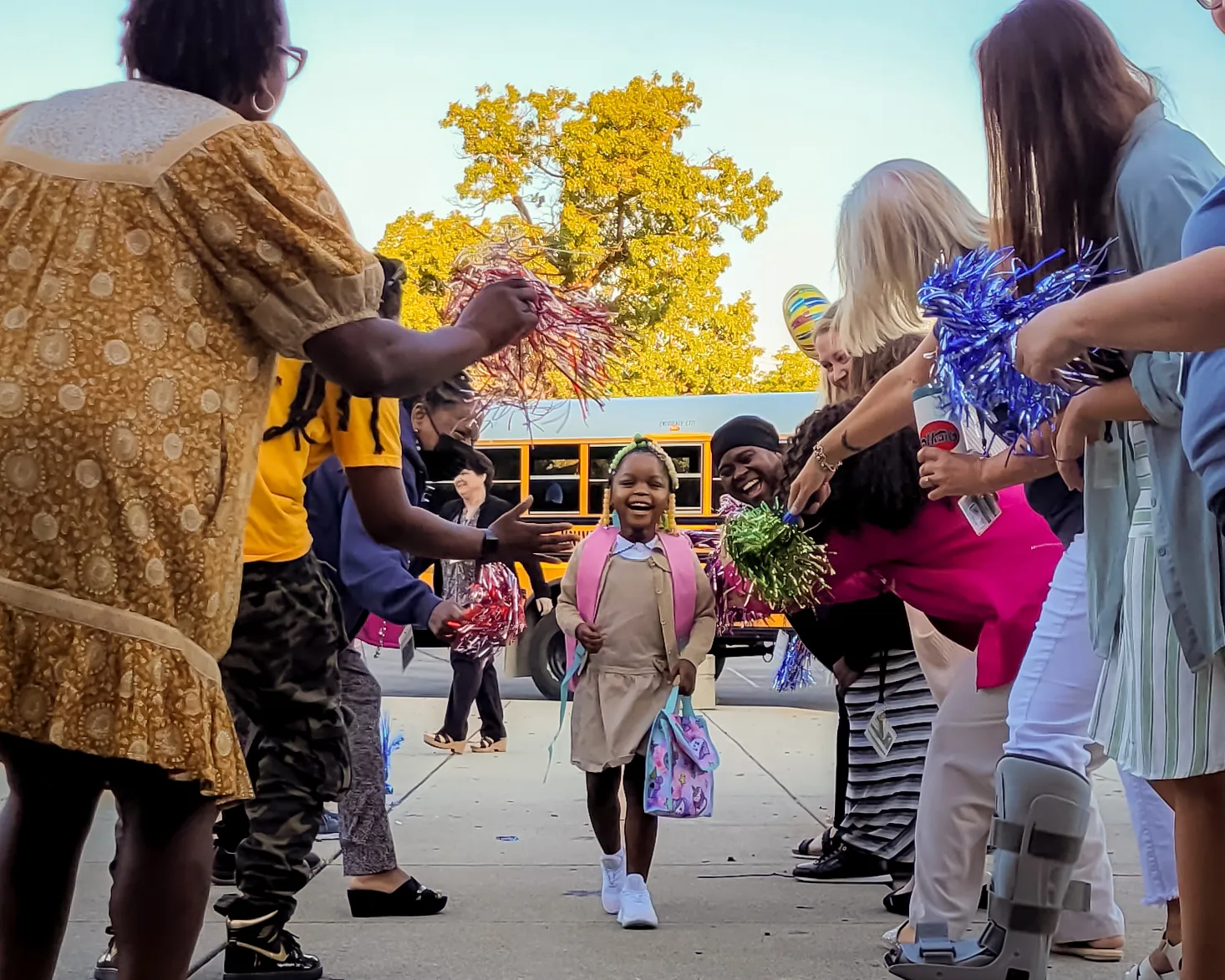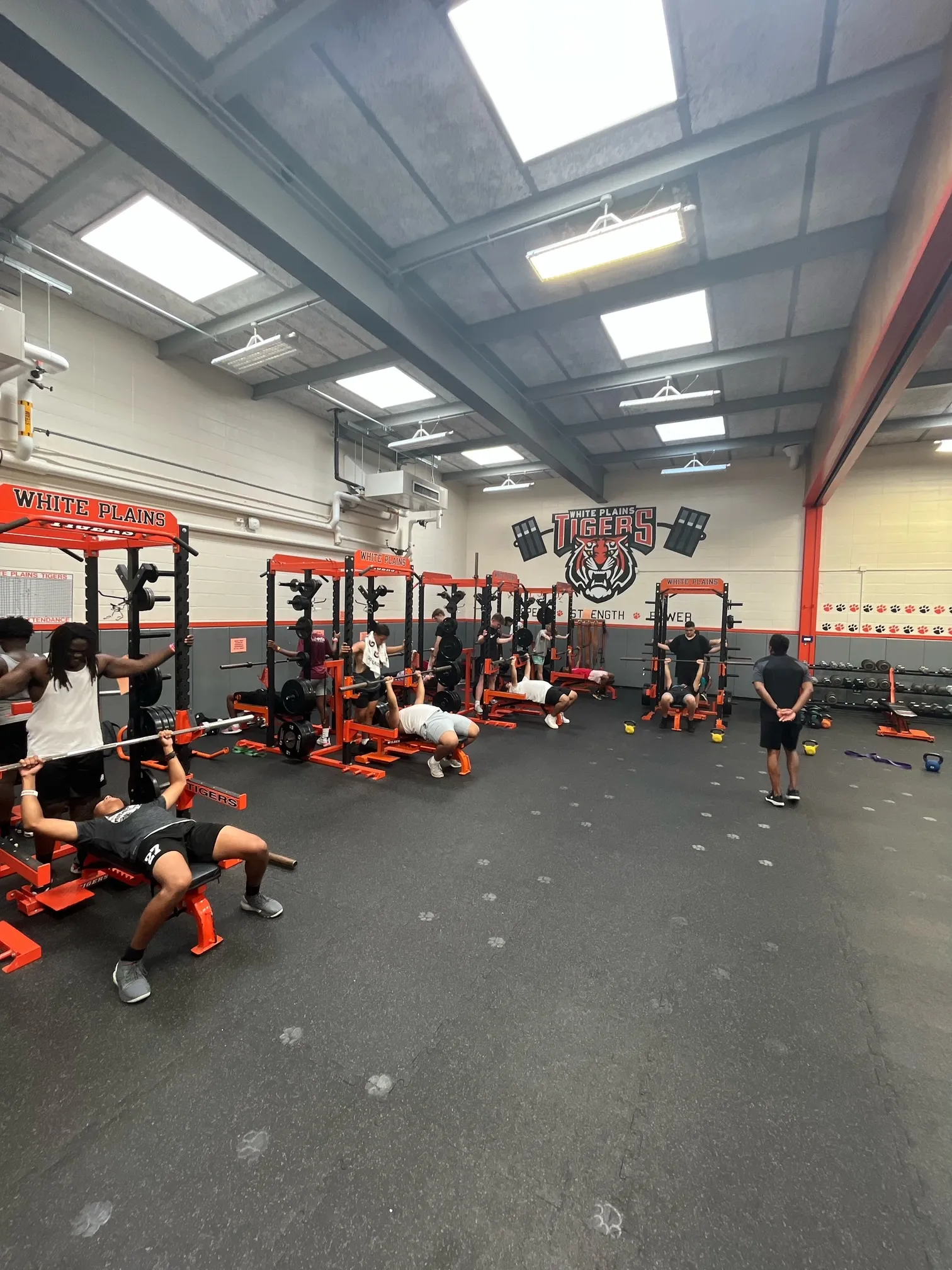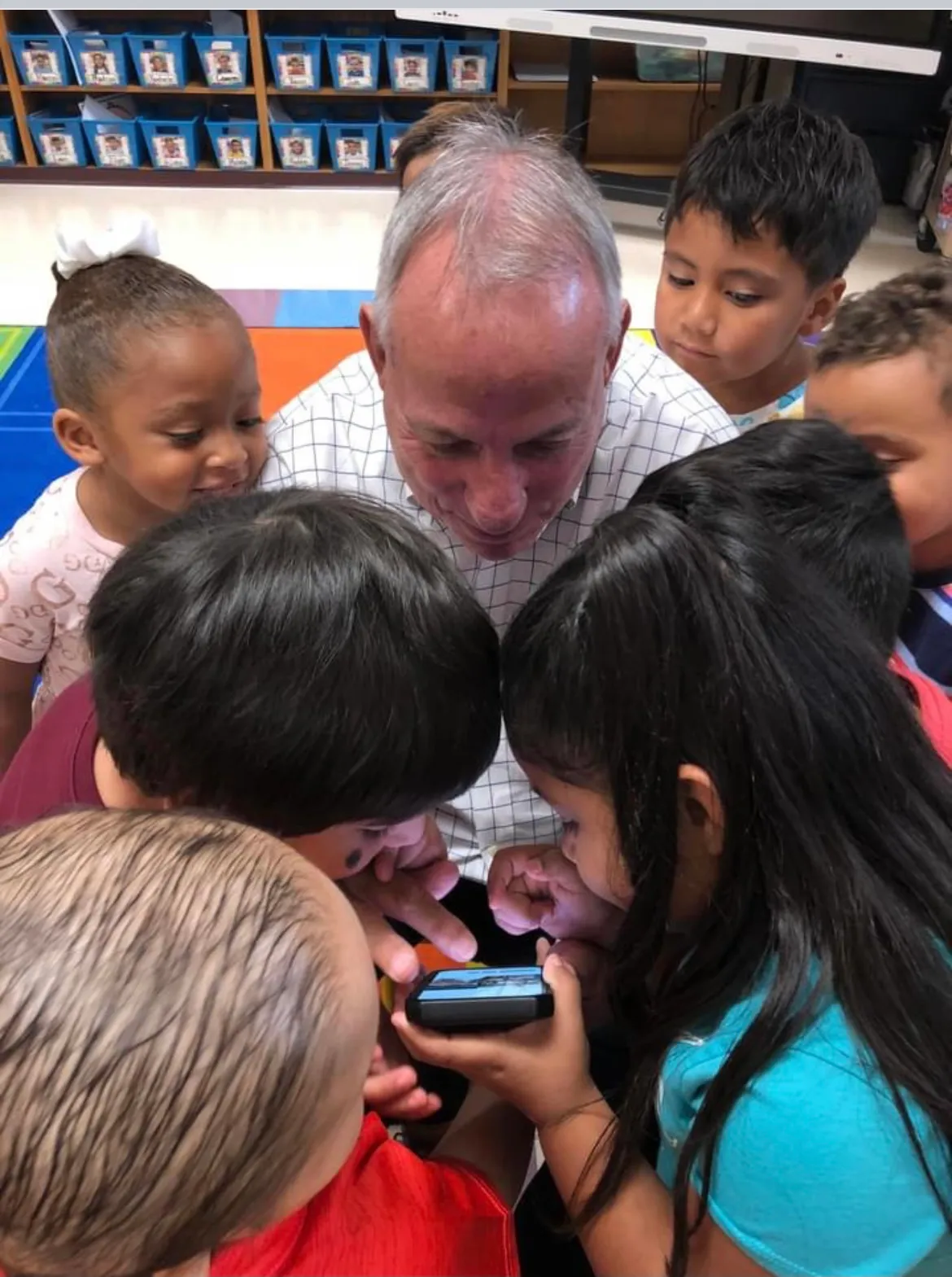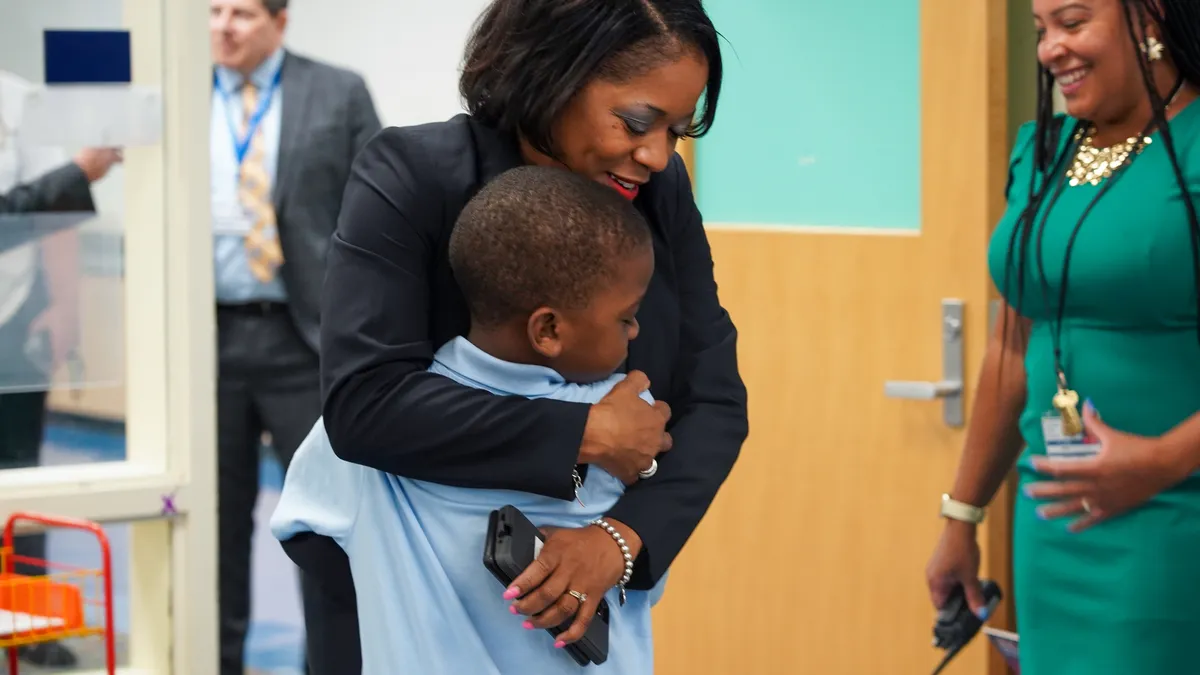As the fourth school year impacted by the pandemic gets underway, school systems are moving from crisis response mode to long-term strategic planning. Even though concerns about COVID-19 still permeate educators' thinking and school activities, the 2022-23 school year is starting off as a more typical year not seen since 2019.
As such, district leaders are channeling attention toward boosting student and family engagement around academics, extracurriculars and fun celebrations. School systems will also put energy into maintaining and strengthening the community partnerships that developed during the public health crisis.
"You know, working with children, I think, is truly the most important profession."

Joseph Ricca
Superintendent of White Plains Public Schools in New York
Superintendents are focusing on staff recruitment and retention with knowledge that pandemic learning gaps will be hard to narrow if high quality teachers aren't available or if counselor and social worker vacancies leave schools with a lack of mental health supports and resources.
School safety is another priority as threats of violence and cyberattacks keep districts on high alert, with a significant amount of time and funding being spent to protect students and staff.
While the responsibilities of school system leaders are more immense than ever, many say they are excited and hopeful for this year and are looking forward to the work ahead.
Here, three superintendents discuss priority areas for their school systems for the new school year, as well as points of pride in their districts.
Iranetta Rayborn Wright, Cincinnati Public Schools, Ohio
It's only been a few months since Superintendent Iranetta Rayborn Wright took over the 36,000-student Cincinnati school district in Ohio, but she's already visited all 65 school campuses, engaged personally with 3,500 people, and reviewed responses to a survey that collected feedback from about 1,100 individuals.
Those contacts and communications helped the urban district identify common themes to focus on this school year. In addition, she's incorporated this outreach into a 100-day plan during her transition as the district's new leader.
The main focus area, Wright said, is getting back to the basics of ABCs — academics, behavior and culture. For academics, teachers are being encouraged to assess students' strengths and needs so they can tailor supports. The district is also looking at boosting resources for instruction, including best practice strategies for teaching.

Behavior refers to supporting the social-emotional needs of students and staff, as well as reaching out to families to share mental health resources. Efforts around culture will strengthen ways schools can promote celebrations, respect, learning and recognition.
"We want to galvanize our entire community so that they can provide support and wrap their arms around our students," Wright said.
To that end, the district launched a Be Present! initiative on Aug. 12 to encourage the entire school community to support its students.
For teachers and non-instructional staff, that could mean helping students pursue their passions, Wright said. Families can support their children by attending parent-teacher conferences or volunteering at school events. Businesses and community organizations are also invited to volunteer and partner with the district. Students even play a role by being encouraged to attend school every day ready to learn.
"Not every parent is comfortable with what we're doing right now in education," Wright said. But every adult can understand the value of letting students know they are valued and cared about, she said.
"We want to identify for every stakeholder what it is that you can do to support our children," said Wright, adding that the district's supportive partners — from the Cincinnati Zoo to area colleges to local businesses — are a point of pride for the district.
The district, which had its first day of school on Aug. 18, is also working to break down the siloed mindset of a separation between district central offices and schools.
"For us it's important that we redefine what it means to be a part of the district … that there are two groups of individuals that are working for the common goal, and the common goal is academic success for all of our children," Wright said.
Those two groups are those in schools and those who support them, she said. "Because if you're not in school on the front line, then your responsibility is to support those that are."
Joseph Ricca, White Plains Public Schools, New York
Momentum for the new school year — which begins Sept. 6 for the district's more than 7,000 students in the White Plains, New York district — began over the summer months as schools hosted programs offering enriching coursework and activities, said Superintendent Joseph Ricca.
Between 400 and 500 students participated in summer programs that for the first time included strength and conditioning open to all high-schoolers, SAT prep courses and other academic offerings, Ricca said.

Local partnerships enabled the district to expand its summer programming. "As we move now into the school year, our focus is really mission-driven, and that is making sure that every single one of our 7,000 children has exactly what they need to continue to make forward progress," he said.
That starts with being attentive to the human aspect — the people — Ricca said. "We're taking care of the hierarchy of human needs before we can attempt to get to that pinnacle of academic excellence," he said.
The district has hired more psychologists, social workers and counselors to attend to students' social-emotional well-being. It is expanding parent programming to ensure families have access to whatever resources they need. And it is trying to make sure students stay healthy and fit by providing nutritious meals.
Ricca said attention is also being focused on supporting staff. The district is making sure collective bargaining agreements are sustainable. It's also looking at ways to reduce meeting times and implement other workplace efficiencies.
"We want to make sure that morale is high," he said. "We need to make sure that they're healthy, so that they can support our children to the best of their ability."
Ricca credits the district's various partners — including legislators, the seven-member Board of Education and community residents — for taking bold steps in helping the district meet its goals of helping students, families and staff.
For instance, Ricca said the board never asks why something can't be done. "It's about how do we get this done? They've led us through this process. They've led by allowing us to do what we need to do. They've led by being courageous and taking calculated risks."
The hardships experienced during the pandemic have been difficult, he said, but his hope is that from the lessons learned and the resilience experienced, that the energy for supporting students grows larger.
"It's a very, very exciting time," Ricca said. "You know, working with children, I think, is truly the most important profession."
Steve VanMatre, Tuloso-Midway Independent School District, Texas
Campus safety is the biggest priority for this 4,000-student school district in Corpus Christi, Texas. "It's something that I think about, if not definitely daily, probably hourly," said Superintendent Steve VanMatre, who like Cincinnati's Wright, is in his first year as leader for this year-round school system.
The district is located two hours away from Uvalde, Texas, where 19 students and two teachers were killed during a school shooting in May. That tragic event is leading Tuloso-Midway, which had its first day of school July 19, to examine how the district can increase security both immediately and through projects that will take longer to plan and pay for, VanMatre said.
For instance, the district has increased from weekly to daily the frequency that staff check to see that exterior doors are locked. The district is also updating its protocols and training, including preparedness training for emergencies related to accidents at nearby oil refineries, VanMatre said.
The district has hired or contracted with mental health experts and police officers and security personnel. And it has contracted with a third party to review its overall safety measures. In total, the safety and security measures are expected to cost about $300,000 this year, which is $225,000 more than the year before, he said.
Long term, the district's Board of Trustees is calling for a $100 million bond for the November election that would include funding for enhancing safety procedures, such as vestibules at schools so visitors can be buzzed into the buildings, according to VanMatre.

The district is also prioritizing academics. VanMatre said although learning gaps in his district narrowed last school year, they are not back to 2019 levels. "But it's real close," he added.
Efforts are also being directed at supporting student athletic teams, academic teams, musicians and performers, VanMatre said. In fact, he said, the arts and extracurricular activities are a point of pride in the district where even the youngest children are encouraged to explore music and art.
"Tuloso-Midway ISD pays attention to music, drama, fine arts. They do it so well," he said.


















